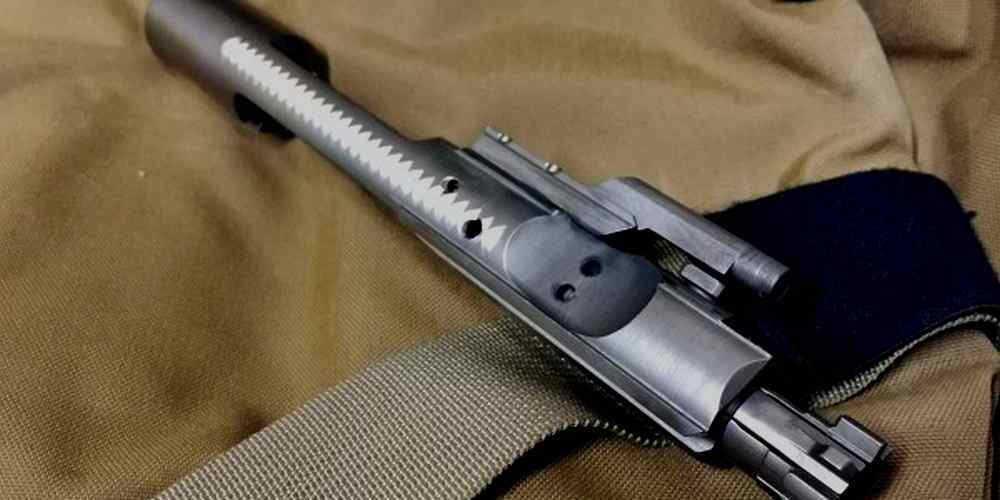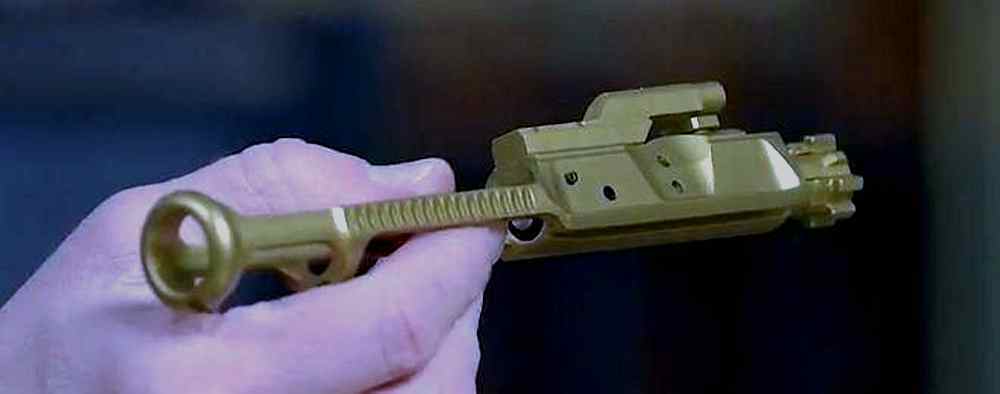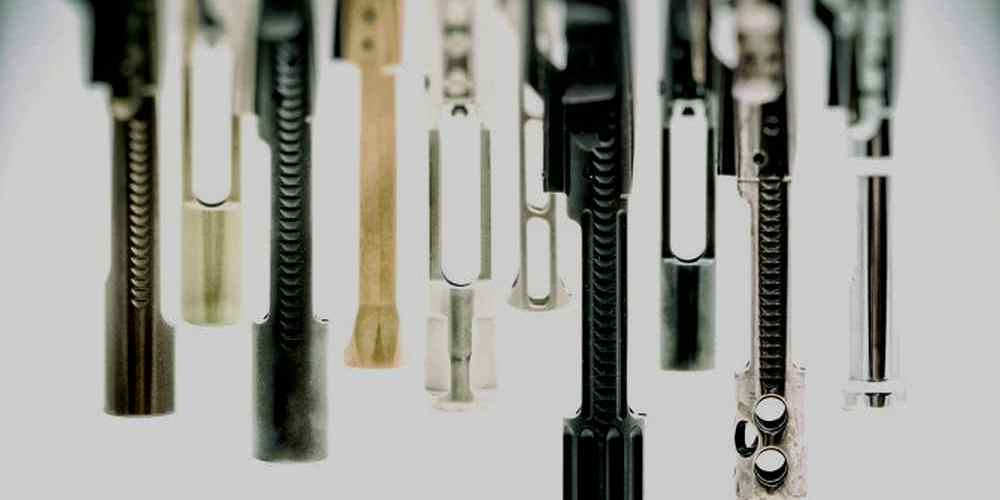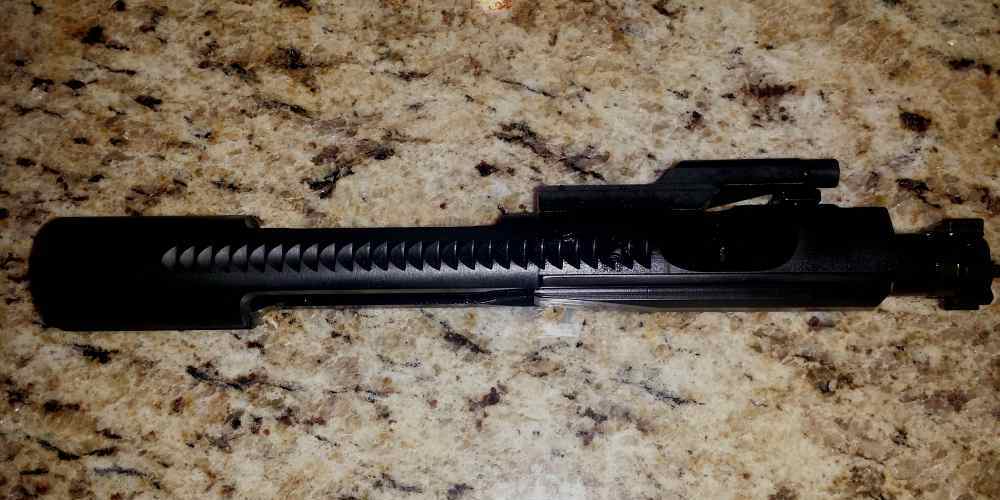“AR15 BCG Failures: Turning setbacks into advancements for improved performance”
Common Causes of AR15 BCG Failures
The AR15 is a popular rifle known for its reliability and versatility. However, like any mechanical device, it is not immune to failures. One of the most common areas where failures can occur is in the bolt carrier group (BCG). Understanding the common causes of AR15 BCG failures can help gun owners prevent malfunctions and enhance the functionality of their rifles.
One of the primary causes of AR15 BCG failures is improper maintenance. The BCG is a critical component of the rifle that requires regular cleaning and lubrication to function properly. Failure to clean and lubricate the BCG can lead to increased friction and wear, which can cause malfunctions such as failure to extract or failure to feed. To prevent these issues, gun owners should make it a priority to clean and lubricate their BCG after each use.
Another common cause of AR15 BCG failures is using low-quality or improperly sized ammunition. The BCG is designed to work with specific types of ammunition, and using ammunition that is too weak or too powerful can cause malfunctions. Additionally, using dirty or corroded ammunition can lead to fouling in the BCG, which can also cause malfunctions. To prevent these issues, gun owners should always use high-quality, properly sized ammunition and inspect each round for cleanliness before loading it into the rifle.
Improper assembly or installation of the BCG can also lead to failures. The BCG is a complex component with many moving parts, and if it is not assembled correctly, it may not function properly. Additionally, if the BCG is not installed correctly in the rifle, it may not cycle properly, leading to malfunctions. To prevent these issues, gun owners should carefully follow the manufacturer’s instructions when assembling and installing the BCG.
Another common cause of AR15 BCG failures is worn or damaged parts. Over time, the parts of the BCG can wear out or become damaged, leading to malfunctions. Common parts that may need to be replaced include the extractor, ejector, and gas rings. To prevent these issues, gun owners should regularly inspect their BCG for signs of wear or damage and replace any worn or damaged parts as needed.
In conclusion, understanding the common causes of AR15 BCG failures can help gun owners prevent malfunctions and enhance the functionality of their rifles. By properly maintaining their BCG, using high-quality ammunition, assembling and installing the BCG correctly, and replacing worn or damaged parts, gun owners can ensure that their AR15 functions reliably and efficiently. By learning from mistakes and taking proactive measures to prevent failures, gun owners can enjoy the full potential of their AR15 rifles.
How to Identify Potential Issues with Your AR15 BCG
The AR15 is a popular firearm known for its reliability and versatility. However, like any mechanical device, it is not immune to malfunctions. One common area where issues can arise is with the bolt carrier group (BCG). The BCG is a critical component of the AR15, responsible for chambering rounds, extracting spent casings, and cycling the action. Understanding how to identify potential issues with your AR15 BCG is essential for maintaining the functionality and performance of your firearm.
One of the most common BCG failures is a failure to extract. This occurs when the spent casing is not properly removed from the chamber after firing. This can be caused by a variety of factors, including a dirty or damaged extractor, weak extractor spring, or improper lubrication. To identify this issue, check for brass shavings or marks on the casing, as well as any signs of deformation on the extractor itself. If you notice any of these signs, it may be time to replace the extractor or spring.
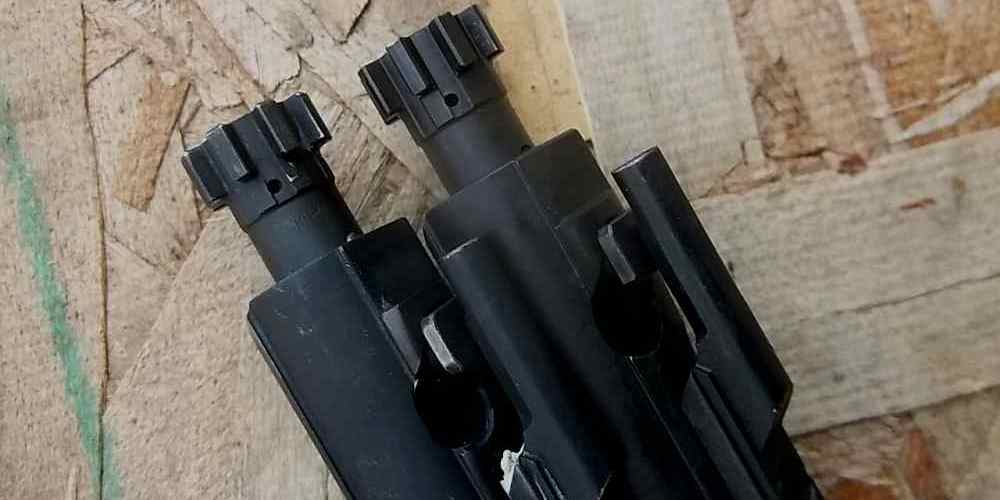
Another common issue with AR15 BCGs is a failure to feed. This occurs when the next round in the magazine is not properly chambered after the previous round is fired. This can be caused by a variety of factors, including a dirty or damaged feed ramp, weak magazine spring, or improper ammunition. To identify this issue, check for any signs of wear or damage on the feed ramp, as well as any feeding issues when cycling the action manually. If you notice any of these signs, it may be time to clean or replace the feed ramp, magazine spring, or switch to a different type of ammunition.
One less common but still important issue with AR15 BCGs is a failure to lock back. This occurs when the bolt does not lock back after the last round is fired, indicating that the magazine is empty. This can be caused by a variety of factors, including a dirty or damaged bolt catch, weak buffer spring, or improper magazine. To identify this issue, check for any signs of wear or damage on the bolt catch, as well as any issues with the buffer spring or magazine. If you notice any of these signs, it may be time to clean or replace the bolt catch, buffer spring, or switch to a different magazine.
In conclusion, understanding how to identify potential issues with your AR15 BCG is essential for maintaining the functionality and performance of your firearm. By being aware of common BCG failures such as failure to extract, failure to feed, and failure to lock back, you can take proactive steps to address these issues before they become more serious. Regular maintenance, proper lubrication, and using quality components are key to preventing BCG failures and ensuring the reliability of your AR15. By learning from mistakes and taking steps to enhance the functionality of your AR15 BCG, you can enjoy years of trouble-free shooting with your firearm.
Preventative Maintenance Tips for AR15 BCGs
The AR15 is a popular firearm known for its reliability and versatility. However, like any mechanical device, it requires regular maintenance to ensure optimal performance. One critical component of the AR15 is the bolt carrier group (BCG), which is responsible for chambering rounds, extracting spent casings, and cycling the action. Unfortunately, BCG failures can occur if proper maintenance is neglected. In this article, we will discuss common AR15 BCG failures and provide preventative maintenance tips to enhance functionality.
One of the most common BCG failures is carbon buildup. As the AR15 is fired, carbon residue accumulates on the BCG, causing it to become dirty and sluggish. This can lead to malfunctions such as failure to extract or failure to feed. To prevent carbon buildup, it is essential to clean the BCG regularly. Use a solvent and a brush to scrub away carbon deposits, and then lubricate the BCG with a high-quality gun oil to ensure smooth operation.
Another common BCG failure is improper headspacing. Headspacing refers to the distance between the face of the bolt and the base of the cartridge when the round is chambered. If headspacing is incorrect, it can lead to dangerous malfunctions such as misfires or ruptured cases. To prevent headspacing issues, always use high-quality ammunition that meets SAAMI specifications. Additionally, have a qualified gunsmith check the headspacing of your AR15 periodically to ensure it is within safe limits.
One of the most serious BCG failures is a cracked or broken bolt. A cracked bolt can result from overpressure rounds, improper headspacing, or metal fatigue. If a cracked bolt is not addressed promptly, it can lead to catastrophic failure of the firearm. To prevent bolt failures, inspect the bolt for cracks or signs of wear regularly. If you notice any damage, replace the bolt immediately with a high-quality, properly headspaced bolt to ensure safe operation.
Another common BCG failure is a broken extractor. The extractor is responsible for gripping the rim of the cartridge and extracting it from the chamber. If the extractor is damaged or worn, it can lead to failure to extract or failure to eject. To prevent extractor failures, inspect the extractor regularly for signs of wear or damage. Replace the extractor if necessary, and ensure it is properly tensioned to provide reliable extraction.
In conclusion, AR15 BCG failures can be prevented with proper maintenance and attention to detail. Regular cleaning, inspection, and lubrication of the BCG are essential to ensure reliable operation. Additionally, using high-quality ammunition and having the headspacing checked periodically can help prevent dangerous malfunctions. By learning from common BCG failures and taking proactive measures to prevent them, you can enhance the functionality and longevity of your AR15. Remember, a well-maintained BCG is essential for a well-functioning firearm.
Upgrading Your AR15 BCG for Improved Reliability
The AR15 is a popular and versatile firearm that is used by many gun enthusiasts for various purposes, including hunting, target shooting, and self-defense. One of the key components of the AR15 is the bolt carrier group (BCG), which is responsible for loading, firing, and ejecting rounds from the firearm. However, like any mechanical part, the AR15 BCG is not immune to failures.
One common issue that AR15 owners may encounter is BCG failures, which can manifest in a variety of ways, including failure to extract, failure to eject, and failure to feed. These failures can be frustrating and potentially dangerous, so it is important for AR15 owners to understand the causes of BCG failures and how to prevent them.
One of the main reasons for BCG failures is poor quality or worn-out components. Over time, the parts of the BCG can wear down due to repeated use, leading to malfunctions. Additionally, using low-quality or improperly manufactured parts can also contribute to BCG failures. To prevent these issues, AR15 owners should regularly inspect their BCG for signs of wear and tear and replace any worn-out parts with high-quality components.
Another common cause of BCG failures is improper maintenance. Neglecting to clean and lubricate the BCG can lead to a buildup of dirt, debris, and carbon fouling, which can impede the proper functioning of the BCG. To prevent this, AR15 owners should clean and lubricate their BCG regularly, following the manufacturer’s recommendations for maintenance.
In some cases, BCG failures may be caused by a lack of proper tuning or adjustment. The gas system of the AR15 plays a crucial role in cycling the BCG, so it is important to ensure that the gas system is properly tuned to the specific ammunition being used. Additionally, adjusting the gas block and buffer weight can help optimize the cycling of the BCG and prevent failures.
While BCG failures can be frustrating, they can also serve as a learning opportunity for AR15 owners. By understanding the causes of BCG failures and taking steps to prevent them, AR15 owners can enhance the functionality and reliability of their firearm. Upgrading the BCG with high-quality components can also help improve the performance of the AR15 and reduce the likelihood of failures.
There are many aftermarket BCG upgrades available for AR15 owners, including enhanced bolt materials, improved gas rings, and upgraded extractors. These upgrades can help address common issues that lead to BCG failures and improve the overall performance of the AR15. By investing in these upgrades, AR15 owners can ensure that their firearm operates reliably and efficiently.
In conclusion, BCG failures are a common issue that AR15 owners may encounter, but they can be prevented with proper maintenance, tuning, and upgrades. By understanding the causes of BCG failures and taking steps to address them, AR15 owners can enhance the functionality and reliability of their firearm. Upgrading the BCG with high-quality components can help improve the performance of the AR15 and reduce the likelihood of failures. By learning from mistakes and investing in upgrades, AR15 owners can enjoy a more reliable and efficient firearm.
Troubleshooting AR15 BCG Failures: What to Do When Things Go Wrong
The AR15 is a popular rifle known for its reliability and versatility. However, like any mechanical device, it is not immune to failures. One of the most common areas where issues can arise is with the bolt carrier group (BCG). Understanding the potential failures that can occur with the AR15 BCG and how to troubleshoot them is essential for maintaining the functionality of your rifle.
One of the most common BCG failures is a failure to extract. This occurs when the spent casing is not properly ejected from the chamber after firing. This can be caused by a variety of factors, including a dirty chamber, weak extractor spring, or improper lubrication. To troubleshoot this issue, first, ensure that your rifle is properly cleaned and lubricated. Check the extractor spring for any signs of wear or damage, and replace it if necessary. If the issue persists, it may be a sign of a more serious problem, such as a worn extractor or chamber.
Another common BCG failure is a failure to feed. This occurs when the next round in the magazine does not properly feed into the chamber after firing. This can be caused by a variety of factors, including a dirty magazine, weak magazine spring, or improper ammunition. To troubleshoot this issue, first, ensure that your magazine is clean and properly loaded. Check the magazine spring for any signs of wear or damage, and replace it if necessary. If the issue persists, it may be a sign of a more serious problem, such as a worn feed ramp or chamber.
One of the most serious BCG failures is a bolt lug failure. This occurs when one or more of the lugs on the bolt carrier group break or shear off. This can be caused by a variety of factors, including overpressure ammunition, improper headspacing, or a defective bolt carrier group. To troubleshoot this issue, first, ensure that you are using the correct ammunition for your rifle. Check the headspacing of your rifle to ensure that it is within spec. If the issue persists, it may be a sign of a defective bolt carrier group, and it should be replaced immediately to prevent further damage to your rifle.
In conclusion, understanding the potential failures that can occur with the AR15 BCG and how to troubleshoot them is essential for maintaining the functionality of your rifle. By being proactive in addressing these issues, you can ensure that your rifle remains reliable and safe to use. Remember to always follow proper maintenance procedures and seek professional help if you are unsure of how to address a BCG failure. By learning from mistakes and taking the necessary steps to enhance the functionality of your AR15, you can enjoy many years of reliable shooting with your rifle.





